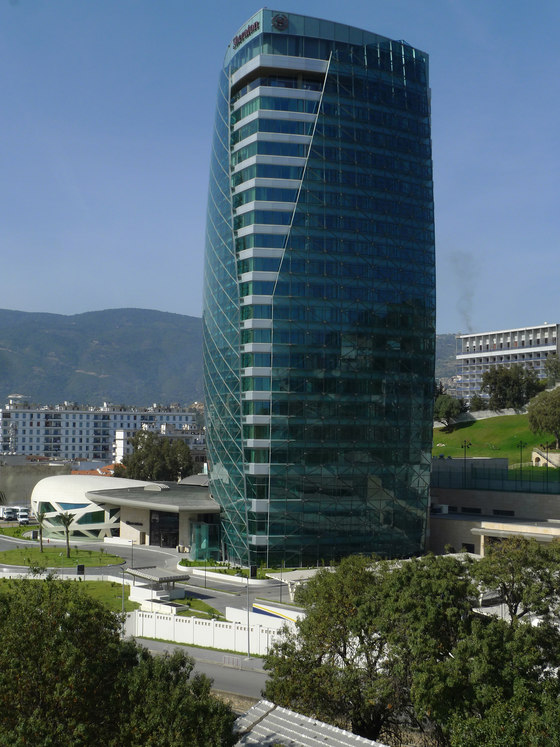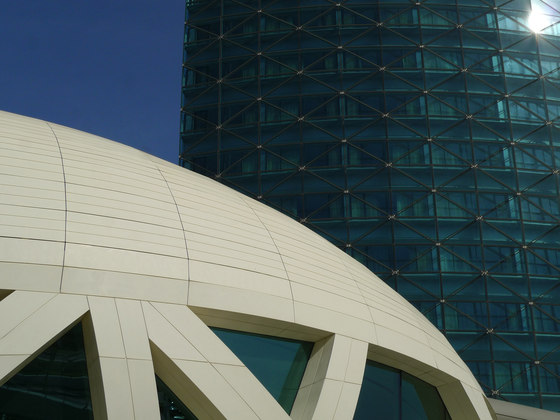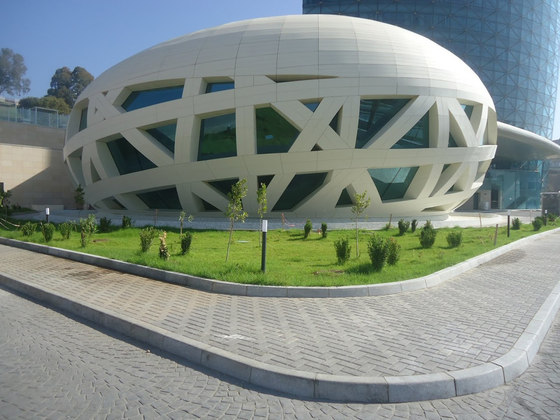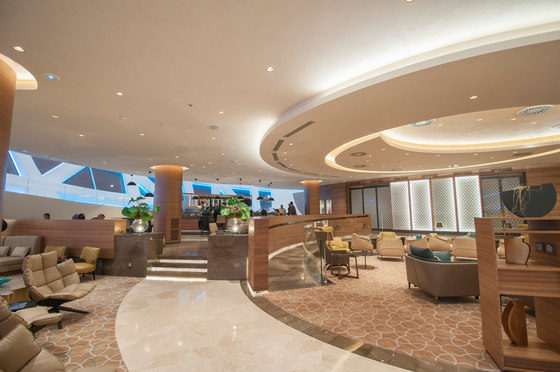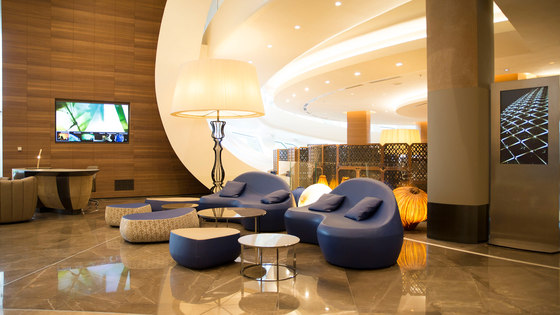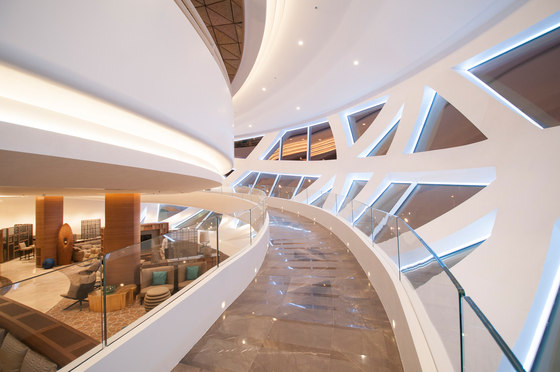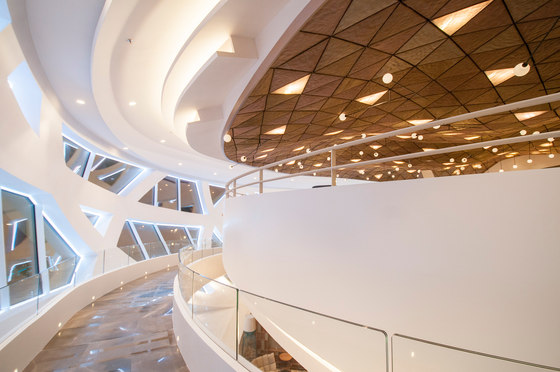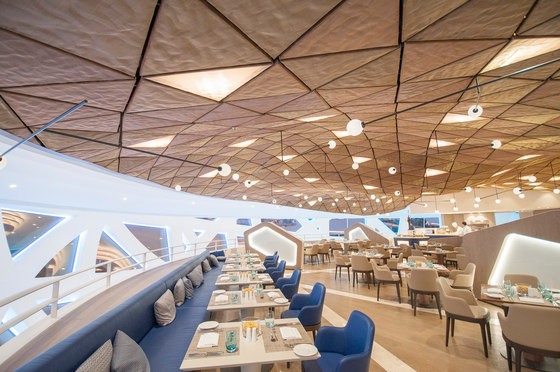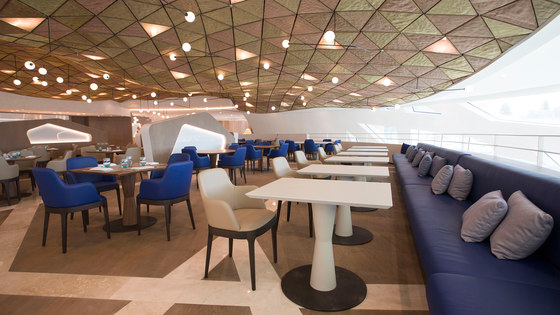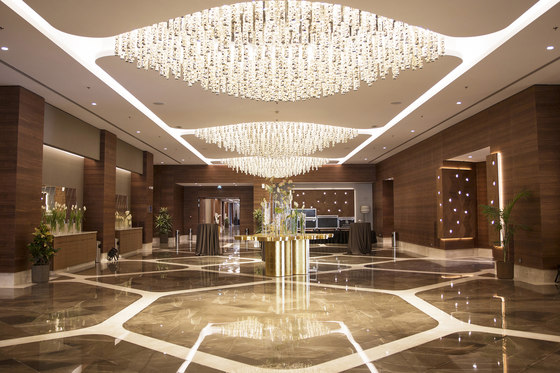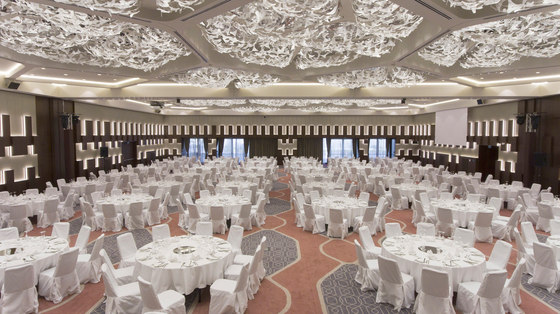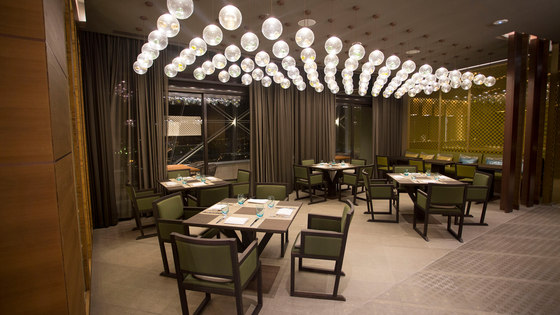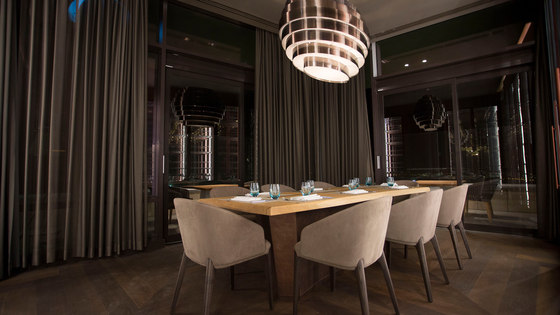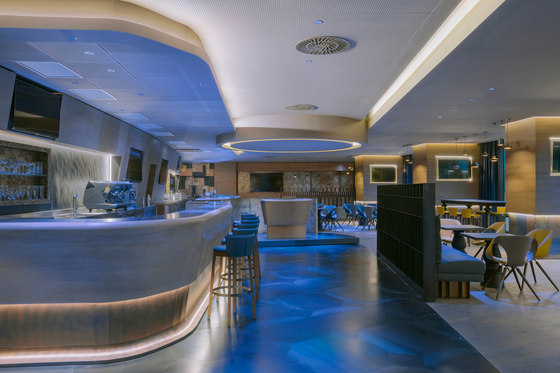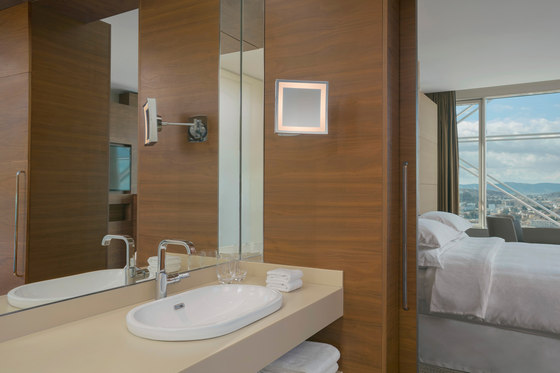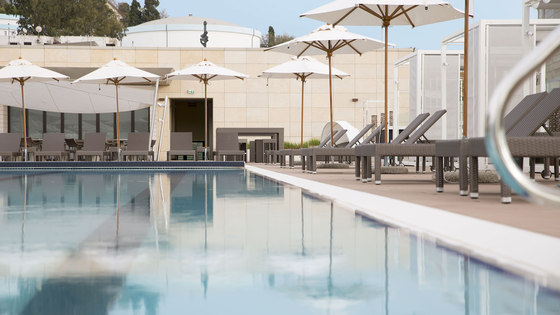Opened at the end of 2016, the Sheraton of Annaba is located in a central area of the city, close to the citadel at the top of the hill that delimits its boundaries. The ground on which the construction is located is relatively small size, according to which the project was mainly developed in height for a search of functional optimization.
The main tower, with its 83 meters high, is characterized by a double skin facade which, thanks to a cut and transparency, makes it stand out the plastic shapes generated by the curvilineal plant, accentuating the effect of rush toward the sky. It hosts 187 standard rooms, 15 executive suites and a presidential suite besides the communal areas of the business centre, SPA, two restaurants and Club Lounge.
The double skin contributes to the aesthetic result of the construction, but it was strongly wanted by the design team to seek comfort and energy savings. The outer shell protects the building especially during the long and hot summer months.
The glass surfaces have been carefully studied for energy efficiency, color rendering of perception from the interior and ultimately the final aesthetic effect of the whole. This involved a work of analysis of the interrelationships between the inner skin and the outer skin, both in the case of overlapping between the two, and in cases of direct exposure of the inner skin which, in the position of the main edge of the building, is totally uncovered.
The modular curtain wall that make up the facade have been designed to be mounted detached to each other so that they can breathe the gap between the two skins throughout its height.
The lobby, the lobby café and the main restaurant are in a separate body from the tower, but connected to it continuously: the "bubble". The "bubble", although very small size compared to the tower, results as an autonomous element capable of focusing attention on itself without being overshadowed. The inspirational idea of its form was born from the rigid shell of the curly sea.
Initially symmetrical, it has been subsequently inflated to the far end of the tower to harmonize its meeting with the canopy of the hotel. The target was to make both volumes set at the bottom of the tower and give a melting idea while keeping their identity intact. The openings to the exterior of the “bubble” recall the path of the inner ramp, creating a prospect that plays on the diversity and on the "disorder" of the openings but held arranged inside a three-band grid dictated by the internal distribution system.
The large outdoor swimming pool is placed, with a great structural engagement, over the banquet hall that represents the completion of the hotel's offer and it can be divided in two or three parts according to specific usage requirements. Finally, the tennis courts is placed above the block dedicated to the hotel's general services.
S.I.H. Société d’investissement Hôtelière – Staoueli, Algérie
Fabris&Partners
Site supervision: FABRIS&PARTNERS architetti
General Contractor: C.S.C.E.C. China State Construction Engineering Corporation
